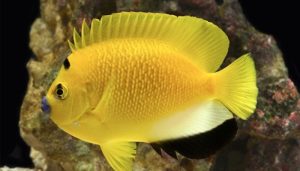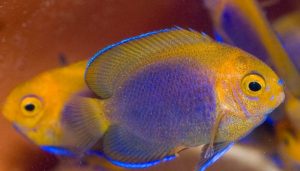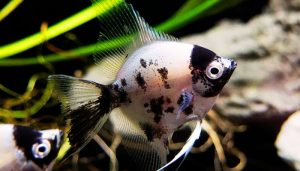Neon Tetra Ich Disease: Prevention and Effective Cures. Have you noticed your neon tetras developing white spots or acting strangely? Ich, or White Spot Disease, is a common but deadly threat to these vibrant fish. Understanding how to prevent and cure it is crucial for keeping your aquarium healthy.
Ich neon tetra disease spreads fast, but early detection and proper treatment can save your fish.
Raising the tank temperature, using proven medications, and maintaining water quality are key to curing it. Experts like Dr. Paul Loiselle recommend quarantine and stress reduction as the best preventive measures.
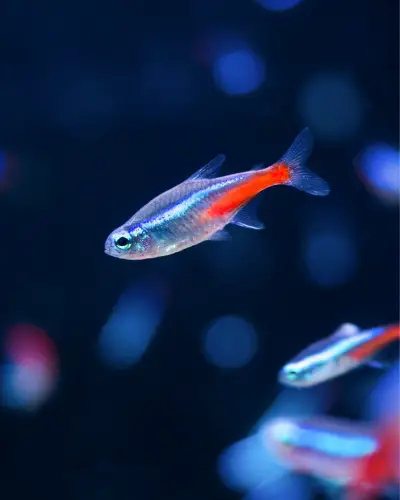
But there’s more you need to know to protect your neon tetras. How does Ich start, and what are the most effective treatments? Let’s dive into everything you need to safeguard your fish from this dangerous disease.
Table of Contents
ToggleWhat is White Spot Disease in Fish?
White spot disease, commonly referred to as Ich or Ichthyophthirius multifiliis, is a highly prevalent parasite afflicting freshwater fish, especially neon tetras. This disease manifests as small white spots on the fish’s body, fins, and gills, resembling grains of salt.
The Ich disease parasite thrives in poor water quality, making it essential for aquarium owners to maintain optimal conditions. It infects the fish by penetrating their skin, leading to irritation and stress, which may cause the fish to exhibit unusual behavior. If left untreated, Ich can lead to severe health issues and even death for infected fish.
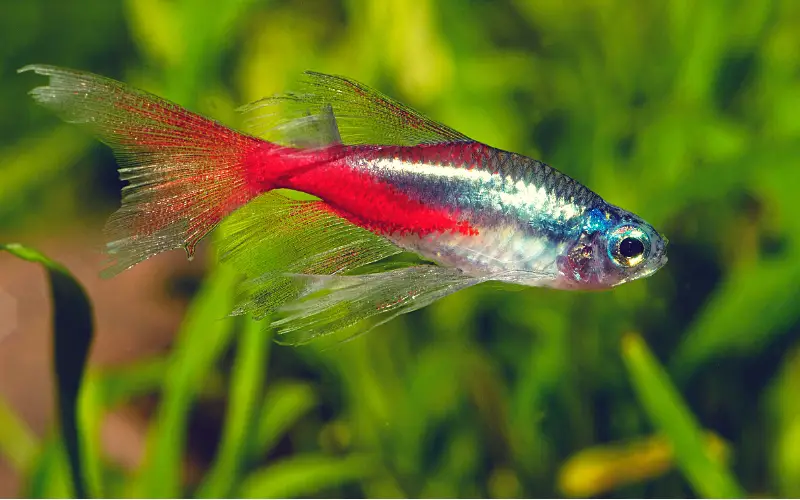
The lifecycle of the Ich parasite involves multiple stages, starting from free-swimming tomites that seek out fish hosts. Once attached, the parasite forms cysts that can cause significant damage to the fish’s epithelial tissues.
This condition is particularly dangerous for sensitive species like neon tetras, as they are not only prone to infection but also have a reputation for being sensitive to environmental changes. To effectively combat Ich, it’s crucial for aquarium owners to take proactive measures in maintaining water quality and ensuring the overall health of their aquatic inhabitants.
Symptoms of Neon Tetra Disease in Fish
Identifying the symptoms of neon tetra fish disease, including Ich, is vital for early intervention. neon tetra with ich may display several signs, such as white spots on their bodies and fins, lethargy, and a lack of appetite.
Additionally, you may observe rapid gill movement and erratic swimming patterns, as the fish struggle to breathe due to gill irritation caused by the parasite. In some cases, neon tetras may also isolate themselves from the school, a behavior that indicates they are not feeling well.
As the fish disease progresses, the infected fish might exhibit curved spines, a severe deformity that signals advanced infection.
It is crucial to monitor the entire tank for signs of Ich, as the disease can spread rapidly among a population of neon tetras and other freshwater fish. If you notice multiple fish displaying symptoms, it’s likely that the entire tank is affected.
Observing your fish closely can help you catch the disease in its early stages, which significantly improves the chances of successful neon tetra ich treatment. Regular aquarium maintenance, including daily water changes, can also help prevent the onset of these symptoms and maintain a healthy environment for your neon tetras.
Why Do Neon Tetras Get Sick?
Neon tetras get sick primarily due to poor water quality, stress, and environmental changes. These fish are highly sensitive to fluctuations in their aquarium environment, including temperature, pH levels, and dissolved oxygen content.
When water quality deteriorates, the fish become more susceptible to diseases like Ich and other fungus infections. Furthermore, introducing new fish into the aquarium without proper quarantine can lead to the rapid spread of parasites and pathogens, making it essential to isolate any new additions in a quarantine tank for at least two weeks.
Another reason neon tetras may become sick is overcrowding within the aquarium. When fish are kept in high densities, they experience increased stress, which can weaken their immune systems. This stress can result from social dynamics, such as aggression from other fish species, or lack of space to swim freely.
Additionally, if the aquarium does not provide adequate hiding spots and territories, neon tetras may feel more vulnerable and stressed. To maintain a healthy school of neon tetras, it’s crucial to provide an appropriate environment that mimics their natural habitat while ensuring proper care and maintenance.
How Vets Diagnose Neon Tetra Disease in Fish
Diagnosing neon tetra disease, including Ich, typically involves a thorough examination by a veterinarian experienced in aquatic medicine. Vets will assess the fish’s physical appearance, looking for telltale signs such as white spots or lesions.
They may also observe the fish’s behavior, noting any lethargy or unusual swimming patterns. In some cases, a vet may take a sample of the fish’s skin or gills to conduct a microscopic examination for the presence of the Ich parasite.
Additionally, the vet will evaluate the aquarium’s water quality, as poor conditions can contribute significantly to the overall health of the fish. Tests for ammonia, nitrites, nitrates, and pH levels can help determine if the environment is conducive to the health of neon tetras.
If diagnosed early, Ich can often be treated effectively with appropriate medications, such as ich medication or heat treatment. However, timely diagnosis is crucial, as delayed treatment can lead to increased mortality rates within the aquarium, particularly among sensitive species like neon tetras.
Why do Neon Tetras Get Curved Spines?
Curved spines in neon tetras can result from several underlying issues, most commonly associated with poor water quality or chronic stress. When neon tetras are subjected to unfavorable conditions, such as high levels of ammonia or nitrite, they can experience growth deformities over time.
These deformities may manifest as curved spines, particularly in larger neon tetras or full-grown neon tetras that have been kept in suboptimal environments. It is essential to monitor water parameters regularly to prevent such deformities.
In addition to water quality, genetic factors can also contribute to the occurrence of curved spines in neon tetras. Overcrowding and inbreeding within certain breeding stocks can lead to the manifestation of physical deformities, including spine curvature.
Stress from aggressive tank mates or lack of hiding spaces can exacerbate this condition. To minimize the risk of curved spines in neon tetras, provide a well-maintained aquarium with appropriate tank mates, ample swimming space, and environmental enrichment that allows the fish to thrive and display healthy growth.
Is Neon Tetra Disease Contagious to Other Animals?
Neon tetra disease is primarily specific to freshwater fish and does not pose a threat to other animals, including mammals or reptiles. However, the Ich parasite is highly contagious among freshwater fish species, meaning that if one fish in the aquarium is infected, it can easily spread to others, including Rasboras and other community tank inhabitants.
This contagious nature emphasizes the importance of early detection and treatment to prevent widespread outbreaks within the entire tank.
To further reduce the risk of contagion, aquarium owners should practice quarantine for any new fish before introducing them to the main tank. A separate quarantine tank allows for monitoring of the new fish’s health and minimizes the risk of introducing parasites or pathogens.
By maintaining good hygiene practices and ensuring that the aquarium environment is suitable for its inhabitants, aquarists can significantly reduce the risk of spreading diseases like neon tetra disease within their freshwater aquarium.
How to Prevent Neon Tetra Disease
Preventing neon tetra disease requires diligent attention to water quality and overall aquarium maintenance. Regular water changes are crucial, as they help maintain optimal conditions for the fish.
Aim for daily water changes and test water parameters frequently to ensure ammonia and nitrite levels remain at safe levels. Additionally, using aquarium salt can help reduce stress and boost the immune systems of neon tetras, making them less susceptible to infections like Ich.
Another important preventive measure is the proper introduction of new fish into the aquarium. Quarantine new fish in a separate tank for at least two weeks before adding them to the main aquarium to monitor for any signs of illness.
Additionally, ensuring that the aquarium is not overcrowded and provides ample hiding spots can reduce stress levels among the fish. By taking these steps, aquarium owners can significantly decrease the likelihood of neon tetras contracting diseases and maintain a vibrant and healthy aquatic environment.
Neon Tetra Ich Disease Treatment
Treating ich on neon tetra involves several effective methods aimed at eliminating the Ich parasite from infected fish. One common approach is heat treatment, which raises the aquarium’s temp to speed up the life cycle of the Ich disease parasite, making it susceptible to ich medication.
Gradually increasing the temperature to around 82-86°F can effectively kill the parasite, but care should be taken to avoid shocking the fish. During this process, it is essential to maintain good water quality and ensure adequate dissolved oxygen levels, possibly by using an air stone.
In addition to heat treatment, aquarium owners can also use specialized ich medication designed to target the parasite. Follow the instructions carefully on the medication package, as overdosing can harm the fish.
Frequent water changes during treatment can help remove free-swimming parasites and improve overall water quality. As treatment progresses, closely monitor the health of all fish in the aquarium, as some may experience stress or other complications.
With timely intervention and the right strategies, aquarium owners can effectively treat Ich disease and protect their neon tetras from further health issues.
Conclusion
In summary, understanding neon tetra Ich disease is essential for maintaining a healthy freshwater aquarium. The disease, caused by the Ich parasite, can lead to severe health complications if not addressed promptly. By recognizing the symptoms, diagnosing the disease accurately, and implementing preventive measures, aquarists can significantly reduce the risks associated with Ich and ensure the well-being of their neon tetras. Regular maintenance of water quality and proper care for new fish will create a thriving environment that minimizes the potential for disease outbreaks. Ultimately, with diligence and proactive care, aquarium enthusiasts can enjoy the beauty and tranquility that neon tetras bring to their aquatic spaces.
Recent blog posts
- Cardinal Tetras Vs Neon Tetras: Which One is (Better for You!)
- Optimal Neon Tetra Water Parameters: (A Comprehensive Guide)
- The Ideal Neon Tetra Tank Size: A Comprehensive Guide
- Why Do Neon Tetras Keep Dying: (3 Weird Reasons Yours Do!)
- How Long Do Neon Tetras Live for: (Unlock Their HIDDEN Lifespan)
- Diamond Tetras Size 101: Care Guide for Moenkhausia Pittieri


